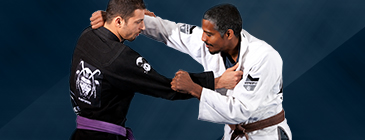If you’re new to Brazilian Jiu Jitsu and/or martial arts in general, you might be completely unaware of the terms that you hear when you get to our martial arts school. Don’t worry, we’ll do our best to explain everything as we teach our world-class martial arts classes. But if you’d like a quick preview of the vocabulary you might run across, we thought we’d go over some of the most common terms you might hear when you start at our martial arts school. While we won’t get into specific types of choke holds and locks, we thought you’d like to know some of the most common terms you might come across.
Let’s start with the most obvious of all: what is BJJ?
Brazilian Jiu-Jitsu
Brazilian Jiu-Jitsu, often shortened to BJJ (like for our martial arts school named SubForce BJJ), is a martial art and combat sport. It focuses on grappling and ground fighting and does not employ strikes. Because it uses a number of joint locks and chokeholds, it is perhaps the best sport for a smaller or weaker opponent to have an advantage over a stronger or armored opponent. BJJ has been around since 1882 and has its roots in the Japanese martial arts jiujitsu and judo.
Gi
A gi martial arts uniform that originated in Japan. It is a shortened form of the word keikogi. BJJ gis are incorporated into the martial art, as they are often points to grab on an opponent.
Sparring
Sparring is a term used in most martial arts that refers to drills, or mock-fighting with an opponent in order to learn a new skill or to practice those skills out on an opponent.
Rolling
Because BJJ is so focused on ground fighting, our sparring is often referred to as rolling.
Sweep
A sweep is forcing an opponent to the ground via a leg grab, giving you a dominant position.
Breakfall
Have you been swept? Then you want to reduce the force with which you hit the mat and be able to recover as quickly as possible so that you can gain the upper hand you’ve lost. Doing this is known as a breakfall.
Guard
Even if one person is under another, it doesn’t mean that they are necessarily in a submissive position. The position of the legs can help to maintain this neutral position that doesn’t allow the opponent to go for a more dominant position.
Pass
When someone has guarded against one of your moves and it will no longer work, it’s important to change position and “pass” to your next option that might work better.
Submission
When rolling or taking part in a competitive match, the idea is to find an advantage over an opponent by using various types of joint locks and chokeholds. Once a hold or lock has been achieved and the opponent has no way out, it is called a submission.
Join A BJJ Class Today!
There are dozens more terms used in BJJ, but those more technical and will have to wait for another day. Ready to get your Brazilian Jiu-Jitsu classes started? Contact us today to check out our martial arts school!








